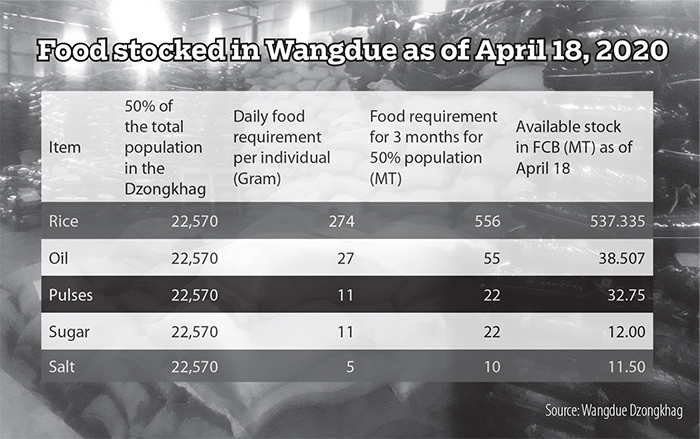Phurpa Lhamo | Wangdue
The agriculture and livestock sector in Wangdue is expected to see a major boost this year due to the dzongkhag’s preparation for the Covid-19 pandemic.
According to the dzongkhag officials, agriculture production could increase by around 60 percent and livestock by 37 percent in 2020.
In the agriculture sector, a fast track crop production initiative to mitigate prolonged disruption of food supply is one of the significant activities.
Agriculture officer, Dhodo, said that the fast track crop production initiative focused on land, labour, and capital. He added that the dzongkhag has identified around 196 acres of barren land and work has begun for all season crop cultivation.
Produce of around 377 metric tonnes (MT) is expected to be in market by June this year.
Similarly, the dzongkhag also identified around 299 acres of wetland for potato and paddy cultivation. The harvest expected to be around 559MT will also be available in the market by June this year.
Dhodo added that buckwheat cultivation on 130 acres of land; oil crop production on 71 acres; and wheat and barley production on 238 acres of land were also expected to be in market by June this year.

“Fallow and abandoned agriculture land is revived for crop cultivation through land development and terracing supports,” Dhodo said.
Today, the dzongkhag has revived around 71 acres of fallow land for crop cultivation.
Understanding the issues of labour and capital in agriculture, the dzongkhag has also supported youth and school dropouts with skills and technical help to initiate farming.
“In Athang Rukha we have already identified around 70 youths who were interested when we talked about the support available. Our officials visit them and give them instructions when needed,” Dhodo said.
In the livestock sector, major focus has been on dairy and pork production.
To prepare the dzongkhag for a lockdown, budget for dairy production was increased by Nu 1.5 million. Additional Nu 750,000 was also invested in feed and fodder.
Wangdue’s livestock officer, Ugyen, said that for dairy production the budget was around Nu 2 million in the past and Nu 1 million for feed and fodder. “Animal breeds are important but if not for the nutrition, production would be affected. We are hoping to increase dairy production by 25 percent.”
The dzongkhag is also expecting to see a 50 percent increase in pork production this year.
Ugyen added that while farmers were more interested in dairy farming, it was difficult to recruit farmers in meat production activities.
The dzongkhag also plans to increase honey production by 0.6MT, which will be in the market by September this year.
Although pork and dairy production is expected to see a major increase, Ugyen said that market wasn’t an issue. “Wangdue has round 24 meat shops and recently around 700kg of pork were directed to Paro. If the produce isn’t absorbed, then we have the Bhutan Livestock Development Corporation. They took around 1.5MT last time and it wasn’t enough as well.”
Construction of the milk processing unit in Phangyul and Khotokha is also underway.
For both livestock and agriculture sector, a major chunk of the budget has been directed from budget assigned for meetings, workshops and training.
Apart from food and livestock production, the dzongkhag by April 18 had stocked around 94 percent of rice required for the first three months for its 50 percent population. Around 70 percent of oil required for its 22,570 (50 percent population) people has also been stocked.
These stocks are made available in three strategic locations—Bajo, Nobding and Kamichu.
To plan and mobilise resources, the dzongkhag has also identified around 8,800 people as the vulnerable group.

